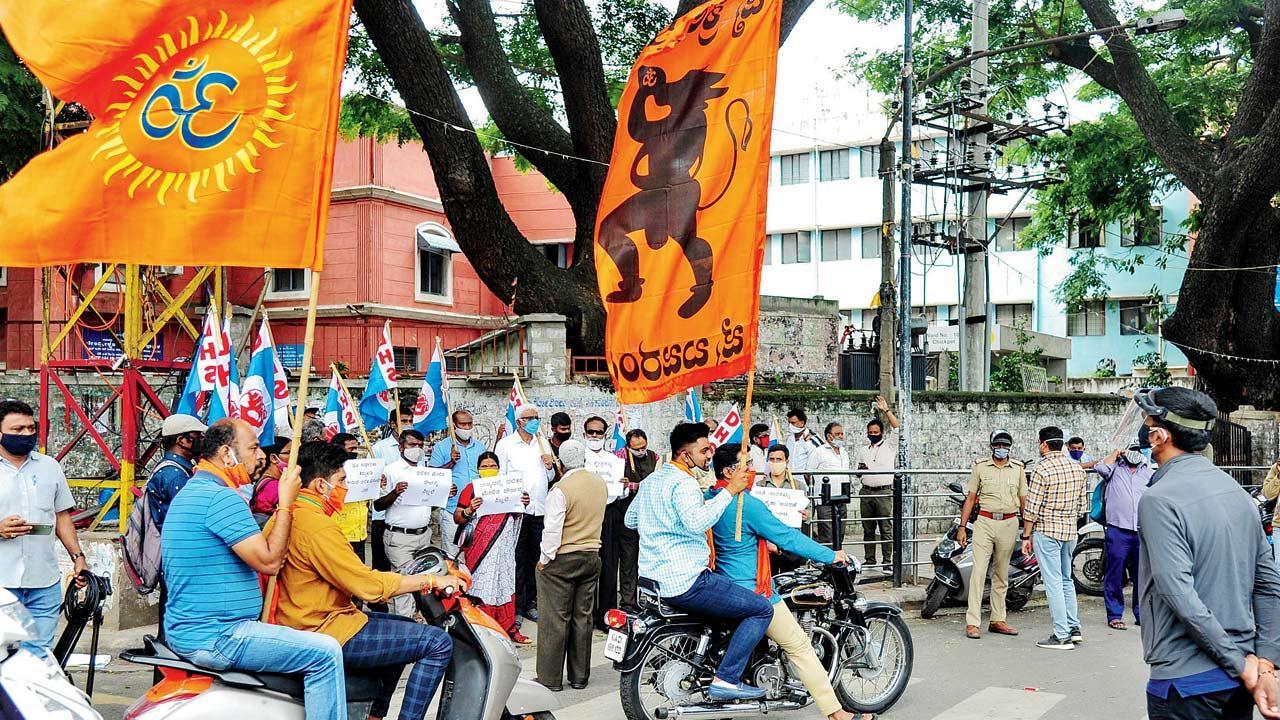Home / Sunday-mid-day / / Article /
Communal Karnataka explained
Updated On: 17 April, 2022 09:35 AM IST | Mumbai | Jane Borges
The widespread anti-Islam rhetoric in the southern state is fuelled by a well-oiled propaganda machine that has little regard for the region’s cultural and historical legacy, say experts

Activists of Bajrang Dal at a protest against the violence that broke out in Devara Jevana Halli in Bengaluru on August 13, 2020, after a “derogatory” Facebook post about the Prophet Mohammed sparked riots, killing two people. Pic/Getty Images
Journalist Greeshma Kuthar is no stranger to communal and hate politics. She has seen it unfold in her backyard. Hailing from Tulunadu, a region in the South-western coast of India, which comprises Dakshina Karnataka—notoriously known as Hindutva’s laboratory in South India—Kuthar is not surprised by the anti-Islam rhetoric that’s spreading there. “This has been brewing for a while; at times, rapidly,” she shares over a phone call, about the recent call for banning the hijab and halal meat.
This is visible in data gathered by Suresh Bhat B, member of the Karnataka Communal Harmony Forum and People’s Union for Civil Liberties (PUCL), Mangaluru. Earlier this year, barely weeks before the ban on hijab in educational institutions, Bhat in a news report had revealed that Coastal Karnataka had witnessed 120 communal incidents in 2021, the highest in four years. During 2020, when the pandemic had brought the country to a grinding halt, the total number of communal incidents was at 110, with incidents of cattle vigilantism at 25, and incidents of hate speech at 47. Six years earlier, in 2014, Bhat had reported grimmer statistics, with 174 communal incidents in the region. Bhat’s data only includes available local media reports. “It is likely that there could be unreported cases, too,” he states in the annually published document titled, A Chronicle of Communal Incidents in the Coastal Districts of Karnataka, available for free access.




